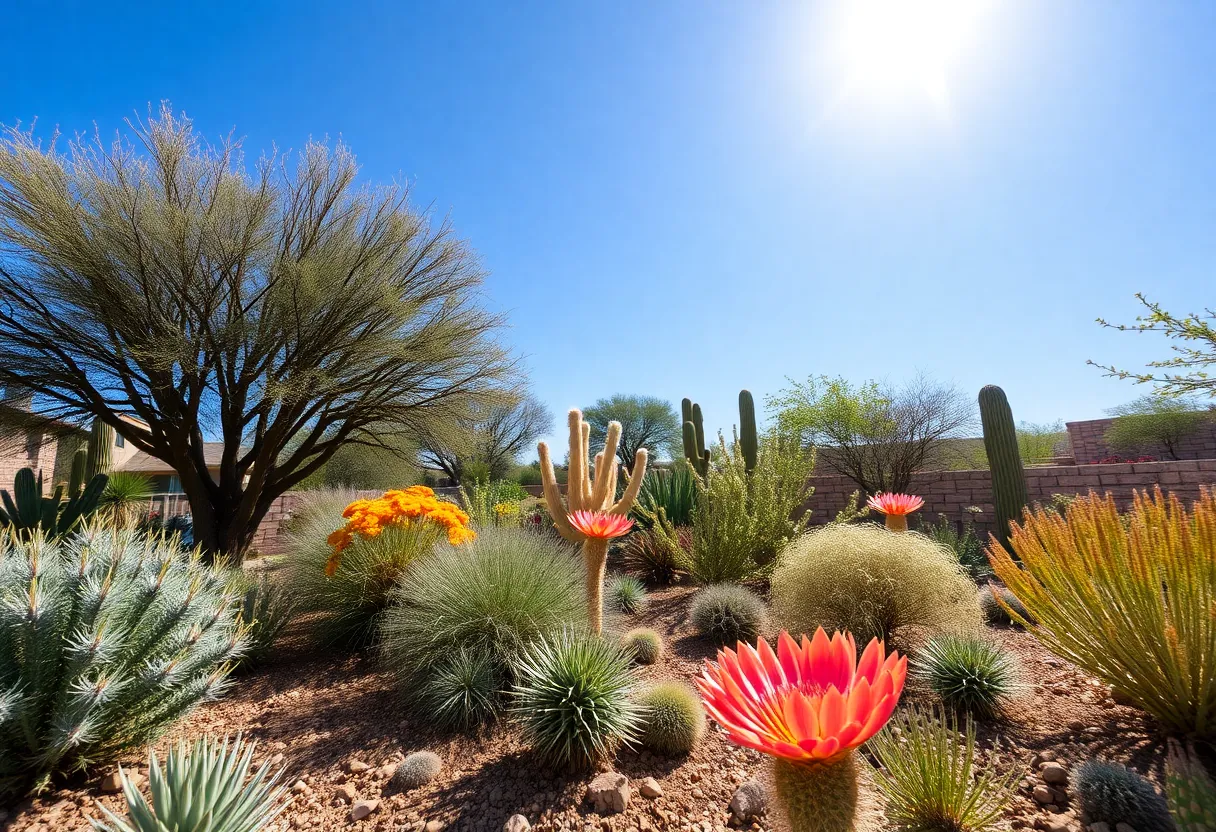10 Essential Gardening Tips for Thriving in Phoenix’s Desert Climate
Gardening in Phoenix’s arid environment requires deliberate strategies to succeed. The extreme heat, low rainfall, and nutrient-poor soil demand a tailored approach. Implementing these ten core principles will significantly enhance your chances of cultivating a vibrant, sustainable garden amid desert conditions.
1. Choose Native and Drought-Tolerant Plants
Selecting native plants ensures your garden uses species already adapted to the local climate and soil. These plants often require minimal supplemental water and maintenance. Incorporate drought-tolerant species such as agave, desert marigold, or palo verde to conserve water while maintaining visual appeal. Native flora not only thrive with less water but also support local ecosystems, attracting native pollinators.
2. Amend the Soil
Desert soils are typically low in organic matter, nutrients, and water retention capacity. Enhance soil health by adding organic amendments like compost, aged manure, or commercial soil conditioners. Proper amendment cultivates a more robust root environment, helps retain moisture, and boosts nutrient availability, directly improving plant vitality.
3. Implement Efficient Watering Practices
Optimal watering minimizes waste and ensures plant health. Use drip irrigation systems for targeted moisture delivery, especially critical for desert plants. Water early in the morning to reduce evaporation and allow deeper absorption before the daytime heat intensifies. Practice deep, infrequent watering; this encourages roots to grow deeper, increasing drought resilience and reducing overall water use.
4. Apply Mulch Generously
Mulching provides multiple benefits vital in desert gardening. Organic mulches like shredded bark, straw, or wood chips help retain soil moisture, cool the soil temperature, and suppress weeds. inorganic options such as gravel or decorative stone are also effective. Applying a 2-4 inch layer around plants protects roots from temperature extremes and minimizes water evaporation.
5. Provide Shade During Peak Sun Hours
Intense midday sun can cause heat stress and sunburn on plants. Creating shade structures, such as pergolas, shade cloths, or planting taller species strategically, offers shelter during the hottest hours. Shade can prolong the growing season and reduce watering needs by moderating soil and air temperatures around vulnerable plants.
6. Select Appropriate Plant Varieties
Focus on heat-tolerant and full-sun plant varieties. Vegetables like tomatoes, peppers, zucchini, and herbs such as rosemary, thyme, and oregano are well-suited. When choosing plants, prioritize those proven to withstand high temperatures and drought conditions to optimize growth and productivity in Phoenix’s climate.
7. Utilize Microclimates
Identify parts of your garden that naturally provide protection or preferred conditions, such as shaded corners or windbreaks. Planting in these microclimates can mitigate temperature extremes, reduce water needs, and extend the growing season. Adjust placement of delicate plants to areas offering partial shade or shelter from harsh winds.
8. Implement Rainwater Harvesting
Rainwater harvesting offers an alternative, sustainable water source. Install rain barrels or create basins to capture runoff from roofs or hardscape surfaces. This stored water can supplement irrigation, lessen dependency on municipal systems, and promote eco-friendly outdoor practices.
9. Practice Companion Planting
Pair beneficial plants to enhance growth, improve flavor, and control pests naturally. For example, planting basil near tomatoes can repel pests and enhance flavor. Intercropping or grouping compatible species optimizes space, minimizes pest issues, and creates a resilient garden system suited to harsh conditions.
10. Regular Maintenance and Observation
Consistent monitoring enables early detection of pests, diseases, or nutritional deficiencies. Regular pruning, fertilization, and soil testing sustain plant health. Keeping a garden journal helps track what works over seasons, allowing adjustments that ensure long-term thriving in a challenging environment.
Conclusion
Successfully gardening in Phoenix’s desert climate hinges on understanding local conditions and applying targeted practices. These core strategies—native plant selection, soil amendments, precise watering, mulching, shading, intelligent plant choices, microclimate utilization, rainwater harvesting, companion planting, and diligent maintenance—create a sustainable ecosystem capable of thriving despite extreme conditions.
Frequently Asked Questions
What are the best native plants for Phoenix’s desert climate?
Examples include agave, desert marigold, palo verde, creosote bush, and mesquite, which are highly adapted to local conditions and require minimal water.
How often should I water my desert garden?
Deep watering once every 1-2 weeks typically suffices, depending on weather conditions and soil moisture. Focus on deep, infrequent watering to promote strong root development.
What kind of mulch is best for desert gardening?
Organic mulches like shredded bark or straw are effective, but inorganic options such as gravel can also work well, especially for decorative purposes and weed suppression.
How can I protect my plants from the intense summer sun?
Providing shade with structures like pergolas or shade cloths, or planting taller plants to shield smaller ones, significantly reduces sun stress and sunburn.
Is rainwater harvesting suitable for desert gardening?
Yes, collecting rainwater during infrequent rainfalls can maximize water efficiency and lessen reliance on municipal supplies, supporting sustainable gardening practices.
Key Features Chart: Gardening in Phoenix’s Desert Climate
| Feature | Description |
|---|---|
| Plant Selection | Native and drought-tolerant species ensure adaptability and water efficiency. |
| Soil Management | Amendments like compost improve fertility and water retention. |
| Watering Techniques | Deep, infrequent watering with drip systems optimizes moisture use. |
| Mulching | Uses organic or inorganic material to retain moisture, regulate temperature, and suppress weeds. |
| Shade and Microclimates | Structures and plant placement mitigate harsh sun and temperature extremes. |
| Rainwater Harvesting | Captures runoff to supplement water supply sustainably. |
| Companion Planting | Enhances growth and pest control through strategic plant pairings. |
| Maintenance | Regular observation and care sustain plant health and adapt to environmental changes. |
Author: STAFF HERE PHOENIX WRITER
The PHOENIX STAFF WRITER represents the experienced team at HEREPhoenix.com, your go-to source for actionable local news and information in Phoenix, Maricopa County, and beyond. Specializing in "news you can use," we cover essential topics like product reviews for personal and business needs, local business directories, politics, real estate trends, neighborhood insights, and state news affecting the area—with deep expertise drawn from years of dedicated reporting and strong community input, including local press releases and business updates. We deliver top reporting on high-value events such as the Waste Management Phoenix Open, Cactus League Spring Training, and Arizona State Fair. Our coverage extends to key organizations like the Greater Phoenix Chamber of Commerce and Visit Phoenix, plus leading businesses in technology and healthcare that power the local economy such as Intel and Banner Health. As part of the broader HERE network, including HERETucson.com, we provide comprehensive, credible insights into Arizona's dynamic landscape.





